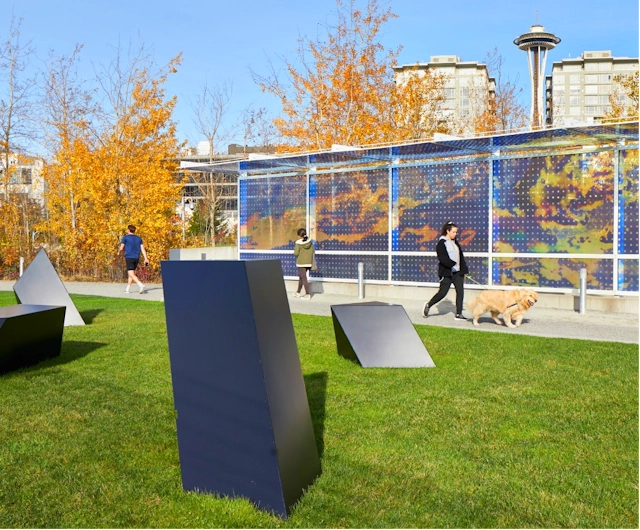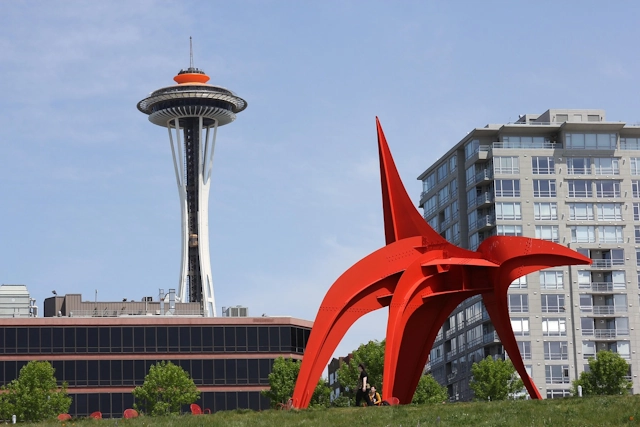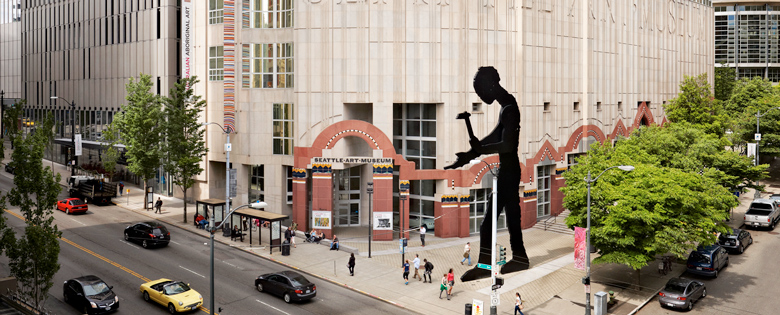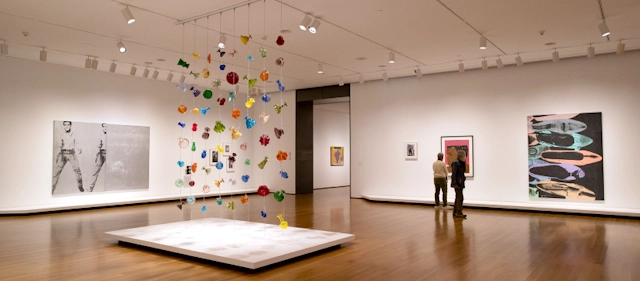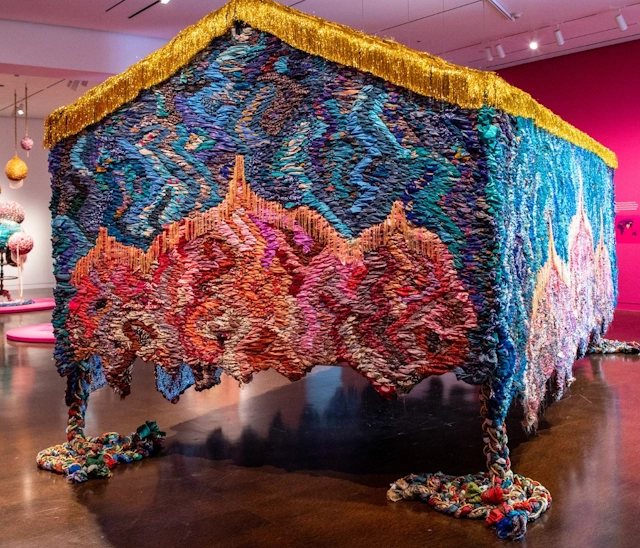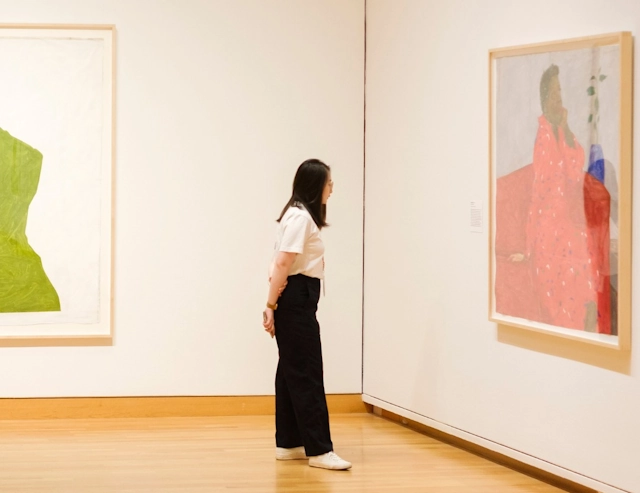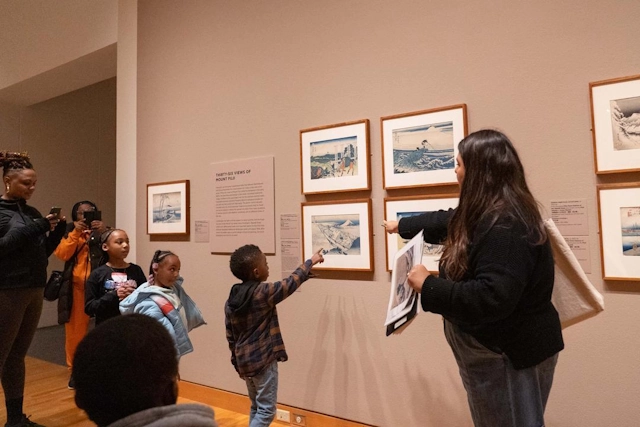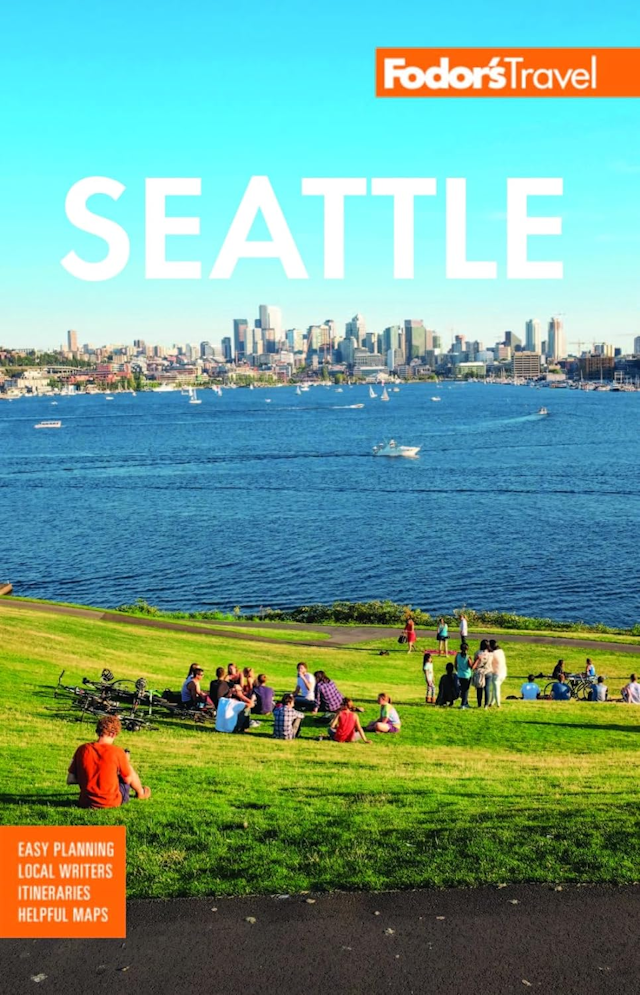Ten
Best Things to See at the Seattle Art Museum
Pacific Coast Highway Travel picks the ten best things to see at the Seattle Art Museum, which includes the Olympic Sculpture Park & Seattle Asian Art Museum.
The Seattle Art Museum (SAM) is a cultural gem in the heart of the Pacific Northwest, boasting an impressive collection that spans centuries and continents. From ancient artifacts to contemporary masterpieces, SAM offers visitors a rich and diverse artistic experience.
Below are the ten best things to see at the museum, each with its own fascinating story and aesthetic appeal.
Ten
Best Things to See at the Seattle Art Museum
1. Eagle by Alexander Calder (1971)
One of the most iconic sculptures in Seattle, Alexander Calder’s Eagle stands proudly outside the museum’s downtown entrance. This massive, bright red stabile is a striking example of Calder’s signature style—bold, abstract, and playful. Weighing over 38 tons, the sculpture seems to defy gravity with its dynamic, wing-like forms stretching outward.
Calder, a pioneer of kinetic art, was known for his mobiles and stabiles, and Eagle perfectly captures his ability to balance weight and movement. The sculpture’s vibrant color contrasts beautifully against Seattle’s often-gray skies, making it a beloved landmark.
Visitors are encouraged to walk around it, observing how its shapes shift with perspective. Eagle isn’t just a sculpture; it’s an invitation to engage with art in public space.
2. Black Sun by Isamu Noguchi (1969)
Located in the nearby Olympic Sculpture Park, Black Sun is a mesmerizing granite sculpture by Japanese-American artist Isamu Noguchi. This large, circular form with a central void frames breathtaking views of the Puget Sound and the Olympic Mountains, blending art with nature.
Noguchi’s work often explores the relationship between positive and negative space, and Black Sun is no exception. Its smooth, dark surface reflects the changing light, while the circular opening acts as a natural “lens” for the surrounding landscape.
Many visitors use it as a photo frame, capturing the beauty of Seattle through its aperture. The sculpture’s meditative quality makes it a perfect spot for quiet reflection, embodying Noguchi’s belief in art as a bridge betw-attle-arteen humanity and the environment.
3. Sky Landscape by Louise Nevelson (1976)
Louise Nevelson’s Sky Landscape is a monumental wooden wall sculpture that dominates one of SAM’s contemporary galleries. Painted entirely in black, the piece is a labyrinth of geometric shapes—boxes, cylinders, and curves—arranged in a rhythmic composition.
Nevelson, known for her monochromatic assemblages, transformed discarded wood into poetic, architectural forms. Sky Landscape feels like a frozen moment of urban energy, a three-dimensional collage of shadows and structures. The all-black palette unifies the disparate elements, creating a sense of harmony amid complexity.
Standing before it, viewers are drawn into its intricate layers, discovering new details with each glance. It’s a testament to Nevelson’s genius in transforming the ordinary into the extraordinary.
4. The Emperor’s Arrival by Xu Beihong (1943)
This breathtaking ink-on-paper scroll by Chinese master Xu Beihong depicts a majestic procession of horses and riders, evoking the grandeur of ancient imperial China. The dynamic brushwork captures the energy and movement of the horses, their muscles taut, their manes flowing.
Xu Beihong was a revolutionary figure in 20th-century Chinese art, blending traditional techniques with modern realism. The Emperor’s Arrival showcases his mastery of ink wash, where subtle gradations of black and gray create depth and vitality. The scroll is not just a historical scene but a celebration of artistic skill, where every stroke carries intention. For lovers of Asian art, this piece is an unmissable highlight at SAM.
5. Migrant Mother by Dorothea Lange (1936)
One of the most powerful photographs in American history, Dorothea Lange’s Migrant Mother captures the despair and resilience of the Great Depression. The black-and-white image shows Florence Owens Thompson, a migrant farmworker, with her children, their faces etched with exhaustion and worry.
Lange’s photograph became a symbol of human endurance in the face of hardship. The composition—tightly framed, emotionally raw—draws viewers into the subject’s world, making poverty and struggle impossible to ignore. SAM’s display of this iconic work allows visitors to reflect on its historical impact and the enduring relevance of documentary photography in social justice.
Where to Stay in Seattle
6. The Dinner Party by Judy Chicago (1979)
Though SAM does not house the full installation of The Dinner Party, it features related works and studies by Judy Chicago, a cornerstone of feminist art. This groundbreaking piece celebrates women’s history through a triangular banquet table set with symbolic place settings for legendary female figures.
Chicago’s use of ceramics, needlework, and gold chalices challenges traditional gender roles in art. Each plate is a vulvar form, reclaiming female anatomy as a source of power rather than shame. SAM’s exhibits on The Dinner Party provide insight into Chicago’s creative process, showcasing her bold vision of equality and recognition for women in art and history.
7. Killer Whale by John Grade (2014)
A stunning contemporary installation, John Grade’s Killer Whale is a suspended sculpture made of thousands of reclaimed cedar fragments, forming the skeletal outline of an orca. The piece reflects the Pacific Northwest’s deep connection to marine life and indigenous traditions.
Grade’s work is both delicate and monumental, with light filtering through the wooden pieces to create shifting shadows. The sculpture’s hollow structure suggests fragility, commenting on environmental threats to orcas in Puget Sound. It’s a hauntingly beautiful tribute to nature, craftsmanship, and cultural heritage.
8. The Iron Crow by Mark Tobey (1944)
A key figure in the Northwest School of art, Mark Tobey’s The Iron Crow is an abstract masterpiece of calligraphic brushstrokes and layered textures. The painting blends Eastern and Western influences, with its intricate white lines evoking spiritual energy.
Tobey’s “white writing” technique creates a sense of movement, as if the canvas itself is alive. The Iron Crow invites contemplation, its dense patterns revealing new depths upon close inspection. For those interested in mid-century abstraction, this work is a must-see.
9. Warrior and Attendants (Edo Period, Nigeria)
This striking brass plaque from the Kingdom of Benin depicts a warrior flanked by attendants, showcasing the exquisite metalwork of West African artisans. The detailed relief work highlights the Benin Kingdom’s sophistication and artistic legacy.
SAM’s African art collection is among the finest in the U.S., and this piece is a standout. Its historical significance and craftsmanship make it a powerful representation of pre-colonial African artistry.
10. Sammie’s Dream by Jacob Lawrence (1986)
A vibrant narrative painting by Seattle’s own Jacob Lawrence, Sammie’s Dream tells the story of a young boy’s aspirations through bold colors and dynamic composition. Lawrence, a leading figure in the Harlem Renaissance, used art to explore African American experiences.
The painting’s energy and optimism resonate deeply, making it a fitting finale to a SAM visit. Lawrence’s work is a celebration of hope, community, and the power of dreams.
Conclusion
The Seattle Art Museum offers an extraordinary journey through time, culture, and creativity. Whether you’re drawn to ancient artifacts, modernist sculptures, or contemporary installations, SAM has something to inspire every visitor. Each of these ten masterpieces tells a unique story, inviting you to see the world through an artist’s eyes.
More Information
For full information on SAM’s three locations visit the Seattle Art Museum website.
Recent Articles
-
12 Stress-Free Pacific Coast Towns For A Weekend Retreat
Dec 13, 25 10:34 AM
From Seattle to San Diego, a wide variety of attractions draws visitors to the Pacific Coast. Yet, this part of the United States also has some great small towns with excellent attributes. From pictur… -
PCH Lane Reductions Will Be In Place This Week
Dec 03, 25 09:38 AM
Several lanes of Pacific Coast Highway will be shut down in Malibu overnight this week due to construction work. -
Ride the Pacific Coast Highway from San Francisco to L.A.
Dec 02, 25 09:42 AM
There are great road trips, and then there’s arguably one of the all-time finest, the Pacific Coast Highway, from San Francisco to San Diego, mile after mile of dramatic ocean views, rock formations a…
